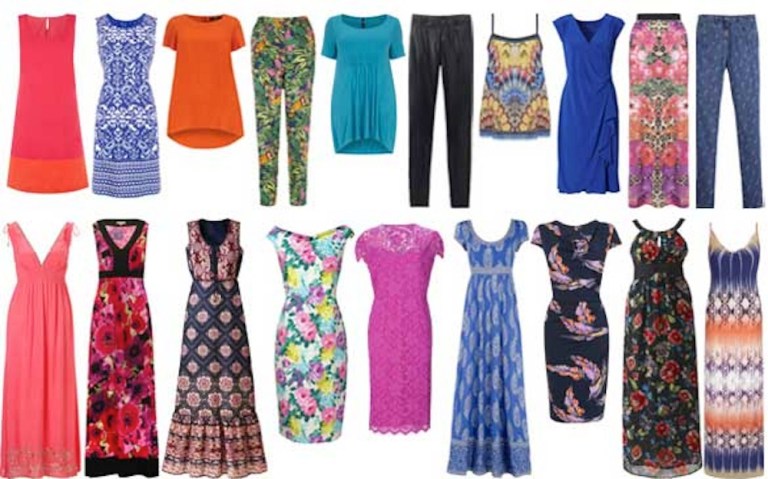
There is an old expression about the dangers of falling from a high place: It’s not the drop that gets you, it’s the sudden stop at the end.
The observation is commonly used as a criticism of superhero movies. For example, if Lois Lane gets pushed off a 50-story building, from the point of view of physics, it doesn’t matter if she hits the ground or if Superman catches her as she passes the 10th story. Falling is never Lois Lane’s problem. Stopping abruptly, on the other hand, is a huge problem, and whether Lois comes to an instant stop in the arms of the Man of Steel or on the pavement of asphalt below, she’s probably not going to survive.
And while criticizing the physics in superhero movies is a useful application for the adage — as 1 out of every 3 movies is about someone in tights fighting crime — it also is curiously apt for the current condition of retail in general, and apparel retail in specific.
Think we’re kidding?
The Fall
We’ve spent much of the first five months of 2016 covering the fall from the 50-story building. Pick a metric and pick a clothing retailer. Odds are pretty good you are going to find a story about decline. Macy’s, Aeropostale, The Gap, J. Crew, Nordstrom, Neiman Marcus, Ralph Lauren, Kohl’s and Saks all saw at least one of the following: falling sales, falling foot traffic, falling revenue and a stock price in free fall. However, there is also a sprinkling of success stories. TJX continues to be a juggernaut, H&M and Forever 21 seem to be hardwired into the young adult consumer’s taste palate, and Urban Outfitters managed to pull off something of a surprise success in the middle of the great Q1 retail route.
But the drops and dips outnumber the success stories by a pretty significant margin.
And while we won’t write that “the fall” isn’t that big a problem, drops and dips are not an entirely unfamiliar part of the apparel game. Macy’s has been around for over 100 years and, as its CEO Terry Lundgren is fond of pointing out, this is not the first series of setbacks or declining figures the massive firm has ever faced. Falls can be slowed, and eventually be reversed into climbs. Macy’s and many of the other stores that currently find themselves in the earnings wilderness are not totally new to life on the frontier; they’ve been here before.
The fall isn’t necessarily going to kill you, and it is possible to correctly stop falling.
A sudden stop? That’s a different story.
The Sudden Stop
In this story, that sudden stop may just be coming in the form of consumers whose retail tastes have just evolved toward something different in kind than what is already in the market.
According to recent estimates, online apparel and accessories are expected to double their 10 percent growth rate of six years ago to a 20 percent annual pick-up by 2020. And, more tantalizingly to apparel retailers, the most fashion-forward (and free-spending) cohort of buyer, millennials, are increasingly likely to buy their clothes online. As of now, almost a third of consumers under 35 buy their clothes online and 30 percent of those between the ages of 35 and 44 buy online. For consumers over 44, that figure is cut in half. Fifteen percent of those between 45 and 54 buy their apparel in online outlets.
And while the often offered panacea to the physical retailer’s current woes is just to refocus their efforts online, that falls into the more easily said than done category. Online apparel retail is full of endemic logistical challenges, such as consumers purchasing multiple sizes of one item and then returning all but one of them. Replacing trying items in a store on with having to package, ship, and then restock unwanted or ill-fitting items (and processing a return payment) comes at a cost, but consumers who shop online expect free shipping and free returns as table stakes.
Some, notably Macy’s Terry Lundgren, thinks those particular logistical challenges means that the existential threat of Amazon’s entrance into apparel retail may be somewhat overstated. Lundgren notes that Amazon may not be prepared for the wonderful world of high-volume clothing returns, especially since it does not have a large network of physical stores to help facilitate those returns.
And while that is a valid point to raise, it seems equally valid to note that Amazon’s interest in logistics borders on obsession. Amazon has been expanding its warehouse and pick-up center network continuously for a half a decade, particularly around college campuses where those young millennials tend to clump. They are also currently building an eCommerce IT center in Minnesota dedicated to solving exactly those kinds of problems.
And hard or not, solving these issues is increasingly looking like more a necessity than an option since, according to a recent Goldman Sachs report, apparel is going online, and the retailers that succeed are going to be the ones who make it work.
“This means an additional $50 billion of sales will migrate online over the next four years, a revenue base equivalent to apparel and accessories sales for Macy’s, Nordstrom and Kohl’s in all channels combined,” the report said, according to CNBC. “At that rate, online penetration of the apparel and accessories category will reach 25 percent in four years, with further adoption across the age and income spectrum.”
Which means the fall isn’t the problem right now — it is the sudden stop (or at least sudden switch) as consumers, and more importantly the future of clothing consumption, is going digital. And it seems retailers are either going along or facing an unpleasant encounter with the pavement.